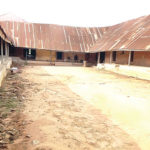
Parking such vehicles on the bridges for a long time undermines their durability and the safety of users. This is because these bridges were not designed to carry the weight of these static, heavy-duty vehicles. Bridges are designed to carry transitional loads, not to retain loads for days or weeks. The fear that a tragedy might be imminent is further underscored by the lack of consistent and thorough maintenance of the bridges. Experts have warned that when these vehicles are stationary on the bridges for a long time, they accelerate the deterioration of the bridges and create bridge-fatigue, damage or even collapse.
Most of the bridges were constructed in the 1970s during the oil boom. Under the difficult days of economic crisis and structural adjustment in the 1980s and 1990s, Nigeria was not able to effectively maintain these infrastructures, let alone sustain investment in infrastructure at the level of the 1970s. Today, Nigeria needs to invest at least $8 billion yearly in order to address the severe deficit in public infrastructure. Current spending on infrastructure is estimated to be $6 billion, $2 billion short of the minimum required. Furthermore, having a large number of stationary heavy-duty vehicles bearing inflammable substances parked on these bridges for too long increases the risk of wild fires. Should any of the vehicles catch fire, the resultant chain reaction may be impossible to arrest until it has caused severe damage to the bridges and to human lives. If the bridges are allowed to collapse, the collateral damage is best imagined.
We are aware that the Nigerian Navy was able to enforce the removal of the heavy-duty vehicles from the bridges last week. However, previous concerted efforts made in the past by the Federal Government and the Lagos State government to address a similar situation proved to be temporary. We urge both governments to put more efforts into solving the problem permanently. Stakeholders must work to provide a loading bay where vehicles, especially those along Western Avenue, could be parked. The National Union of Petroleum and Natural Gas Workers (NUPENG), Association of Maritime Truck Owners (AMATO) and National Association of Road Transport Owners (NARTO) should join hands with the state and federal governments to achieve a permanent and effective solution to the problem.
The number of heavy-duty vehicles has increased with the collapse of the rail system which remains an effective means of inland cargo transport. Thus, special consideration must be given to haulage in the current effort to revamp the rail system across the country if that has not been the case. Lagos State has witnessed massive interventions in the construction of roads and bridges since the return to democratic rule. This has created optimism in infrastructure development in the evolving mega city concept. However, constructing roads and bridges without maintaining existing ones can only lead to marginal improvement in the stock of infrastructure in the state. If old roads and bridges are allowed to deteriorate either as a result of poor maintenance or misuse by citizens, these roads and bridges may turn into nightmares and dangers for residents of Lagos.
WATCH TOP VIDEOS FROM NIGERIAN TRIBUNE TV
- Let’s Talk About SELF-AWARENESS
- Is Your Confidence Mistaken for Pride? Let’s talk about it
- Is Etiquette About Perfection…Or Just Not Being Rude?
- Top Psychologist Reveal 3 Signs You’re Struggling With Imposter Syndrome
- Do You Pick Up Work-Related Calls at Midnight or Never? Let’s Talk About Boundaries






